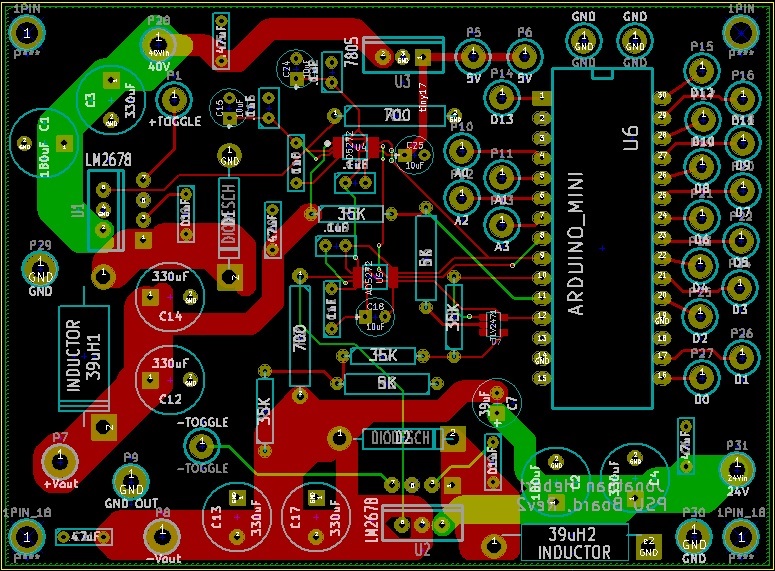I am designing a power supply for my personal use and basing it off the LM2678. I plan to have it take about 36-40V input and 2-30V output with a max current of 3-4A. Right now I have a basic schematic in mind (not quite finished, but will post when I am), but I have a few questions.
First, is it possible to control the output voltage with a DAC, and if so, what would be the best way to go about doing that?
Also, I would like to implement a current limiting circuit into my design, but I am not sure how to integrate it with the rest of the circuit. No fancy constant current or anything, just a limiting circuit. I am also planning to design a voltage-division based arduino-powered volt and ammeter, so if possible I would like to find a way to get all of this working together.
One final thing, I have seen a PDF on TI's website explaining how to wire up a simple switcher non-synchronous buck converter into an inverting buck/boost converter. Is it possible to do that with the LM2678 to create a negative Vout, and are there any pitfalls I should avoid when trying it? Also, if it is possible, I would like to include all the previous features into the negative rail as well.
Thanks,
Jonathan




